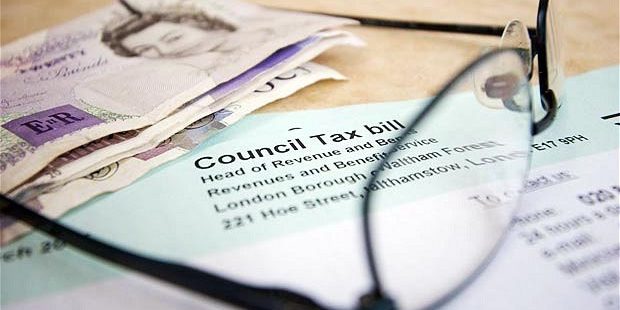Millions of households in England face a 5% rise in April, with bills in the rest of the UK also expected to rise sharply.
What is council tax?
Council tax is a compulsory charge on properties in England, Scotland and Wales set by local authorities to raise money to spend on providing services in their area.
Homes are graded into different “bands”, according to how much they were worth at a certain point in time.
In England, for example, bands are based on what the value of the property would have been on 1 April 1991.
People with more expensive properties are in a higher category.
In Scotland, councils have complete freedom to set rates.
In Wales, local councils set rates, but the government can cap council tax rises that are deemed “excessive”.
Northern Ireland, is not covered by the council tax system – it operates a separate domestic rating system.
Bills are calculated according to property value using what is known as the district rate, set by councils, and the regional rate, usually set by the Northern Ireland Assembly.
What is changing in April?
The government has increased the amount that councils in England are allowed to put up council tax without having to hold a local referendum.
Those with social care duties can raise council tax by 5%, while others can put it up by 3%.
Most councils are expected to impose the biggest increase they are allowed to without consulting residents.
How much will my bill go up?
In England, if you pay the average Band D council tax of £1,966 a year and your council tax goes up by 5%, that would mean an extra £98.30 across the year, or £8.19 a month.
To find out how much you are currently paying in England or Wales, search for your property on the government website.
That site tells you which tax band you are in and which council you pay it to, with a link to its website. There you should be able to find details of your current bill, and how much it will go up in April.
In Wales, the average hike is set to be 5.5%, with Conwy seeing the highest annual rise of almost 10%. Torfaen and Blaenau Gwent will see some of the lowest increases.
In Scotland,you can go to the Scottish Assessors Association website to find your council tax band and a link to your local authority.
All 32 local authorities in Scotland have now set their council tax rates for the coming year – with 22 opting for a 3% rise.
Just two went above 3% – East Renfrewshire (3.5%) and Falkirk (4%).
In Northern Ireland, you need to check the valuation of your property.
In the absence of a sitting assembly, the Northern Ireland Office said in February that regional rates will rise by 6% from April.
The average domestic district rate increase – set individually by Northern Ireland’s 15 councils – is 6.67%.
Where does my council tax money go?
Council tax helps fund a number of local services, including:
- rubbish collection
- street lighting
- libraries
- police and fire services
- youth clubs
- parks and recreation facilities
It is the main source of income for most councils.
Who pays council tax?
As a rule of thumb, anyone who is over 18 and owns or rents a home has to pay council tax, but there are exemptions and discounts based on individual circumstances.
Someone living alone, for example, is entitled to a 25% discount.
A property occupied solely by students is exempt, and you won’t get a bill if you’re living in halls of residence or a care home.
If you work away from home and your property is empty, you can get a 50% discount.
Crucially the occupant of the property is liable for the bill, so tenants have to pay, unless their rent agreement explicitly includes bills.
Struggling with council tax debt?
If you would like to talk to someone about debt, we offer a free and confidential consultation to anyone in financial difficulty. We can advise you on a range of debt solutions suited to your individual circumstances, helping to protect you and your family with a sustainable way to manage your debt. Call 0800 121 48 63.



